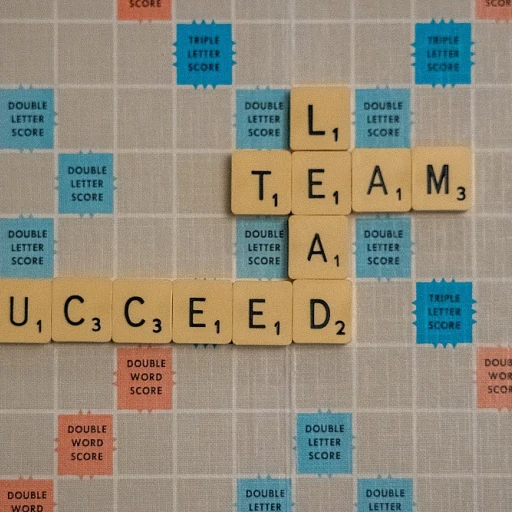
Understanding High Potential Employees
Identifying High Performers
High potential employees are often characterized by their superior performance and the capacity to take on more significant roles within an organization. These individuals possess not only the technical skills needed for their current jobs but also demonstrate strong leadership abilities and the potential for future roles in management and executive positions.
Recognizing these high achievers within a business is crucial for strategic talent development. High potentials often show a remarkable aptitude for learning and adapting to new challenges quickly. They have a proven track record of success and can often be found setting new standards in their current positions. But how is this potential identified?
- Performance: Consistently exceeding expectations in their roles and delivering outstanding results on projects and tasks.
- Learning agility: Demonstrating the ability to learn from experience using their skills and applying them to different situations.
- Leadership qualities: Displaying behaviors that align with the core values and objectives of the company, often influencing and inspiring team members.
- Emotional intelligence: Exhibiting self-awareness, empathy, and effective relationship management which is vital for leadership.
To truly unlock and nurture the potential within these employees, a tailored development program becomes imperative. Such programs should be carefully designed by learning and development directors to align with the individual's career aspirations and the company's strategic goals. This is where the role of a Development Director becomes crucial, ensuring that both the employees' personal and professional growth aligns with the organization’s objectives.
Challenges Faced by High Potential Employees
Navigating Obstacles: The Journey of High Achievers
High potential employees are invaluable to any organization, promising accelerated growth and leadership capabilities. However, their path is laden with challenges that require careful navigation to ensure they reach their full potential. Understanding these obstacles is crucial for effective development and talent management.
- Expectations and Pressure: The label of being "high potential" can often lead to increased expectations from management and peers. This pressure might result in stress and anxiety, impacting their overall performance and satisfaction.
- Resource Allocation: Many organizations struggle with providing adequate resources, such as opportunities for advanced training and development skills. Without the right instructional design, high potential employees may feel neglected or undervalued.
- Limited Job Roles: It's not uncommon for these employees to encounter stagnation in their current jobs. Without clear paths for progression or rotational programs, they might seek opportunities elsewhere.
- Learning and Development Oversight: Companies sometimes fail to establish a structured system for business education and skills enhancement. Tailored instructional programs are crucial for nurturing these individuals.
Addressing these barriers requires a strategic approach, blending personal relations with human resources principles. A well-structured coaching plan can provide personalized guidance. Furthermore, investment in comprehensive training development is necessary.
With the right attention, these challenges can be transformed into opportunities, propelling high potential employees toward leadership and significant contributions to the organization's success.
The Director of Learning and Development's Role
The Integral Contribution of a Learning and Development Director
The dynamic realm of business demands continuous growth and adaptation. In the spotlight of this evolution is the director of learning and development. This pivotal role intertwines with the organization’s fabric, guiding high potential employees towards success. The director’s work is foundational, focusing on enticing individuals with the promise of advanced skills through strategic initiatives.
By embracing modern instructional design methods, directors ensure that training resonates with tomorrow's leaders. They adeptly translate business goals into educational strategies, using their expertise in human resources and talent management. Organizational development becomes more robust as directors scrutinize existing systems, identifying areas for enhancement. Such diligence enables the conversion of learning into practical, impactful results.
High potential employees often face unique challenges on their path. Here, the director of learning and development steps in, facilitating programs tailored to individual needs. By drawing on their rich experience in talent development and job director management, these leaders provide bespoke education, leveraging both technology and human-centric teaching techniques.
The director’s task is a balancing act; engaging employees with training sessions that hone crucial development skills while keeping an eye on emerging trends. Through careful design and execution of training development, directors unlock doors to advanced jobs and leadership roles, particularly within high-potential contexts.
An essential tool for these individuals is mentorship. Interestingly, directors play a crucial part in supporting mentorship structures, seen as instrumental in growth and personal relations. If you’re interested in navigating mentor mind games to support development further, check this article on subtle mentorship artistry.
With such comprehensive support, high potential employees are not just supported but empowered. They are molded into assets capable of steering their organizations to new heights. It’s a strategic confluence of dedication and skilled direction, nurturing an environment where innovation thrives.
Creating Tailored Development Programs
Designing Programs for Personalized Employee Growth
Creating tailored development programs is a critical aspect of nurturing high potential employees, enabling them to effectively harness and amplify their innate abilities. As businesses seek to cultivate a robust talent pool, a director of learning and development must focus on designing systems that cater to individual needs while aligning with organizational goals. To accomplish this, the following key components should be considered:- Comprehensive Skills Assessment: Understanding individual strengths and areas for growth allows for the customization of training initiatives. By utilizing instructional design principles, programs can be crafted to enhance specific skills necessary for both current and future roles.
- Flexible Learning Paths: Incorporating various learning formats, such as e-learning modules, workshops, and on-the-job training, ensures that employees have access to resources that match their preferred learning styles and schedules. A development director should facilitate these options to accommodate diverse educational backgrounds and experiences.
- Mentorship and Leadership Opportunities: Facilitating relationships between emerging talent and seasoned professionals helps foster a supportive learning environment. Encouraging high potential employees to take on leadership roles or participate in cross-departmental projects also builds essential management and organizational development skills.
- Integration of Technological Tools: Leveraging technology, whether through learning management systems or virtual collaboration platforms, enhances accessibility and engagement. This helps provide personalized and timely feedback to employees, crucial for continuous improvement.
Measuring Success and Impact
Evaluating the Effectiveness of Learning Strategies
Understanding how to evaluate the effectiveness of learning development strategies is crucial in today's business environment. One must focus on assessing if the tailored development programs empower high potential employees to grow.- Data-Driven Assessments: Utilize various systems and tools to track progress and measure training impact on job performance. This offers evidence-based insights into the effectiveness of instructional design and training programs.
- Feedback Mechanisms: Encouraging feedback from participants helps refine the content and delivery methods of training. It's not only about developing skills but also about ensuring those skills are relevant.
- Performance Metrics: Collaborating with human resources and leadership to track specific business outcomes, such as employee retention, job satisfaction, and talent development.
Future Trends in Learning and Development
Emerging Innovations in Talent Development
The landscape of learning and development is constantly evolving, making it crucial for human resources and development directors to stay ahead of emerging trends. Modern educational programs are incorporating advanced technologies and new approaches to address the ever-changing requirements of today’s business environment.- Adaptive Learning Systems: These systems utilize artificial intelligence to tailor educational experiences to individual learning styles and paces. Such advancements help bridge the gap between existing skills and desired competencies in a personalized manner.
- Microlearning: With business environments demanding quick and agile responses, training programs are embracing microlearning. This involves delivering information in bite-sized, manageable chunks, making it easier for employees to incorporate learning into their busy schedules.
- Virtual and Augmented Reality: The use of VR and AR in training provides immersive learning experiences, allowing employees to simulate real-world scenarios. This technological boost aids in the experiential understanding of complex job tasks and enhances training programs.












